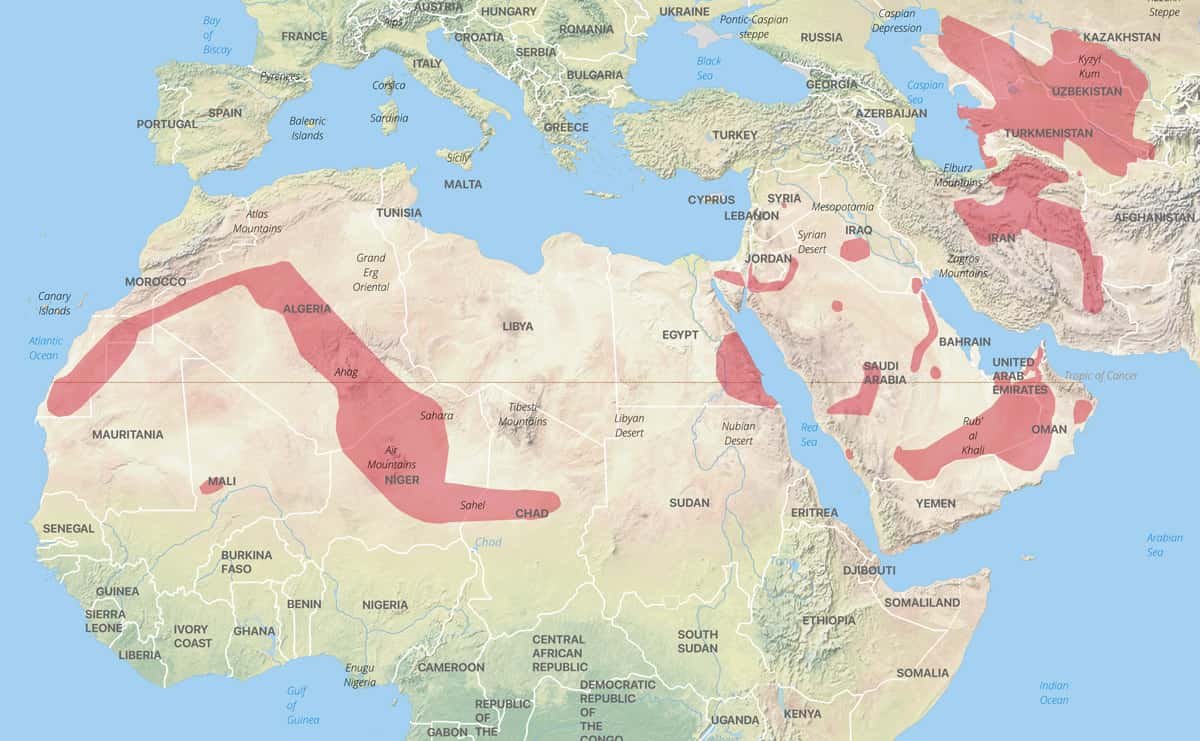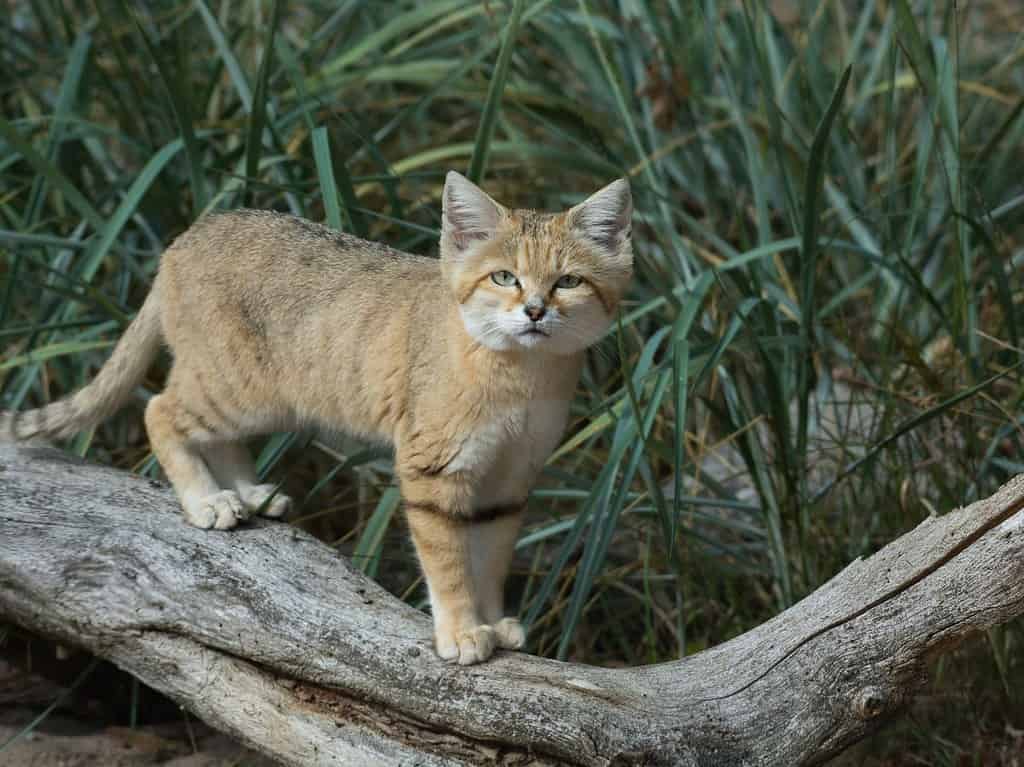While the vast and arid expanse of some of the world’s desert landscapes can often seem barren and devoid of life, the deserts of North Africa, the Arabian Peninsula, and parts of Central Asia are home to the sand cat, Felis margarita margarita.
The sand cat is the only feline species adapted exclusively for desert living.
The sand cat can thrive in extreme desert conditions, tolerating temperatures as low as 23°F (-5°C) and as high as 126°F (52°C).
Sand cats are uniquely adapted to the arid conditions of the desert as they get most of their hydration requirements through the consumption of their prey.
What does the sand cat look like?
The sand cat is a small, wild cat that is a bit smaller and lighter than the domestic cat, with a body length of 18 to 22.5 inches (45 to 57 cm) and a weight ranging between 3 to almost 8 pounds (1.8 to 3.6 kg).
The sand cat has a pale, sandy-yellow to gray coat with black markings, allowing it to blend seamlessly with its desert surroundings.
Proportional to their bodies, sand cats have a fairly long tail. The tail length ranges from 11 to 14 inches (28 to 35 centimeters). The end of the tail has three black bands and a black tip.

The sand cat’s thick and dense fur coat provides insulation from the extreme temperature fluctuations in the desert, while the bottoms of its feet are covered in thick fur that helps insulate and protect them from the hot sand.
The ears on a sand cat are set low on the feline’s head in order to help detect movement below the surface of the desert.
The sand cat uses that enhanced hearing to detect the sound of prey.
During the hotter months, sand cats are crepuscular and nocturnal. This means they are most active from dusk to dawn when the temperatures are cooler. During the winter, they shift to more diurnal activity in order to take advantage of the sun’s heat.
Geographic range of the sand cat
The sand cat can be found in a variety of desert habitats in North Africa, the Arabian Peninsula, and parts of Central Asia, from sand dunes to rocky outcrops and gravel plains. These small wild cats prefer areas with sparse vegetation, which offers both shelter and hunting grounds.

The known geographic range of the sand cat is fragmented although researchers believe that more mapping is needed to complete the known extent of these felines.
Expansive home ranges
Despite its diminutive size for a wild cat, sand cats have a fairly large home range.
A group of researchers fitted sand cats with VHF (Very High Frequency) collars in order to study the home ranges of these felines. Outfitting the cats with these collars allowed scientists to map out information on the animals’ movements, home range, habitat use, and social interactions.
What the study revealed was the sand cats have the largest home range of their genus, Felis. The Felis genus includes small to medium wild cats such as black-footed cats, African wildcats, and the domestic cat.
The results of the telemetry study found that males averaged a home range of about 274.6 square kilometers and females averaged 291.9 square kilometers.
The sample size of the study was small (22 total cats) so the actual measured ranges of the cats varied widely. One sand cat was mapped traveling a range of 1,758 square kilometers.
What researchers concluded from this telemetry study is that the home range of sand cats is far more extensive than previously thought.
The researchers believe that the challenging conditions of the desert are what drive sand cats to have such a large home range.
During times of abundance, sand cats will shrink their home ranges. But during times of ecological stress or disruption from human activities, sand cats will dramatically expand their home range to hunt for food.
Sand cats, based on the observations of the researchers during trapping these felines, do not appear to be all that territorial when home ranges overlap. The scientists observed that the sand cats being outfitted with VHF collars did not display any signs of fighting such as scars or broken teeth.
References
Sliwa, A., Ghadirian, T., Appel, A., Banfield, L., Sher Shah, M. & Wacher, T. 2016. Felis margarita. The IUCN Red List of Threatened Species 2016: e.T8541A50651884. https://dx.doi.org/10.2305/IUCN.UK.2016-2.RLTS.T8541A50651884.en. Accessed on 14 April 2023.
Sliwa, A., Azizi, S., Eddine, M. Z., Alifal, E., & Breton, G. (2023). Home ranges of African sand cats (Felis margarita margarita). Journal of Arid Environments, 210, 104909. https://doi.org/10.1016/j.jaridenv.2022.104909







